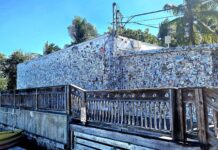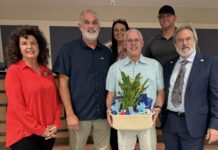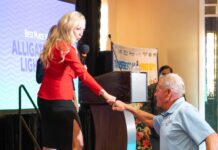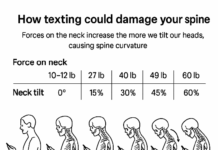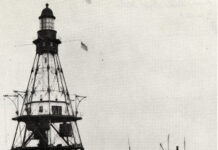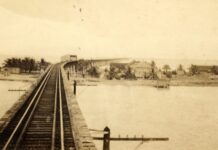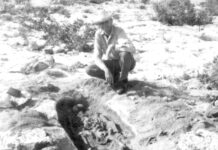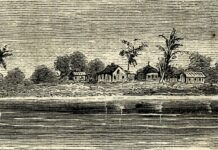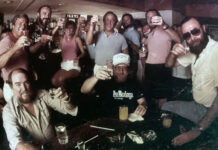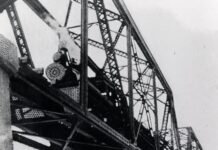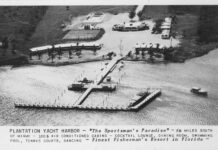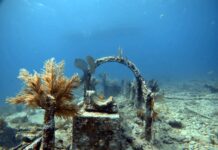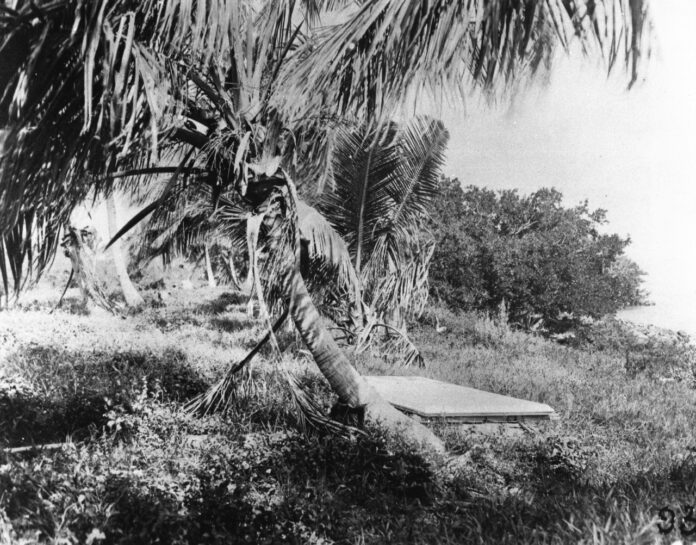
Editor’s note: This is the final of a two-part series.
If ghosts are real, they would totally find Indian Key homey.
Without getting into all the backstory I dove into last week, the island gives off a haunted vibe. Not only is it the Keys’ only ghost town, it also has a unique history with absolutely haunting elements.
Assuming they exist, it is hard to say how many ghosts call Indian Key home. As was discussed last week, bodies have been buried on the island. Since 1966, at least two skeletons have been discovered, only to have them taken from the island.
Beyond those sacrilegious actions, tragedies have occurred on the island — especially one on Aug. 7, 1840, when the island was home to the southernmost attack during all three escalations of the Seminole War.
On that August day, Jacob Housman, whose tombstone is still on the island (at least a replica is), was asleep with his wife on the second floor of their home. When the Indians burst through the front door, he could not get to his rifles, so husband and wife, barefoot, fled out the back door, over the fence and raced for the Atlantic shallows.
Their two large dogs, faithful companions, ran with them, barking and barking in the excitement. As the Housmans worked to find safety in the water, their dogs splashed into the Atlantic after them. Afraid the dogs’ barking would alert the Indians to their location, Jacob made the hard decision and, to quiet them, held their heads beneath the water until they drowned. These days, some people say that it isn’t just human spirits wandering around Indian Key. Some say they have heard dogs barking when there are no dogs present. Perhaps they are Housman’s faithful hounds.
At the time of the attack, John Motte and his wife lived on the island with their daughter, their newborn child and John’s mother-in-law. When the chaos erupted, they chose to abandon their house and seek refuge in the kitchen building. When the Indians found them inside, a shot was fired that penetrated the thin wood of the door. Mr. Motte was fatally struck. They broke through the door and dragged Mrs. Motte, clutching her baby, outside. She was killed, and her baby was tossed into the Atlantic and drowned. The mother-in-law and older daughter were still hiding inside the structure. When the Indians came back, the daughter was dragged outside and clubbed to death. The lone family member to escape was Mrs. Johnson, the 70-year-old mother-in-law.
If anyone had a reason to haunt Indian Key, it was the Mottes. However, they were not the only family to suffer. Dr. Henry Perrine was killed on Aug. 7 while his family listened. Perrine, Florida, is named for him. While his wife and three children hid in the shallows under a dock, he was being hunted down and shot in their home.
There have been other deaths and other tragedies over the years. In 1875, after an outbreak of yellow fever hit Key West, it was decided that those infected would be shipped north to Camp Bell, a Navy hospital established on Indian Key. Yellow fever was a killer in the 19th century. In 1875, one of the attending doctors was Thomas Otto, a third-generation physician from a prominent Key West family.
The Otto name is not remembered so much for its medical services in the Florida Keys, but for a doll. The doll was given to Otto’s youngest son in 1904, on the boy’s fourth birthday. Today, that doll is universally recognized as Robert the Doll. In many circles, Robert is considered the most haunted artifact in the Florida Keys. He doesn’t haunt Indian Key, but the fact that the doll can be connected to the island is such a great example of the often-hidden interconnectedness of the island chain. Robert can be visited at Key West’s East Martello Tower Museum.
The last two potential ghosts who might have a reason to haunt the island died as a result of the 1935 Labor Day Hurricane. In the early 20th century, the island was home to a fishing camp operated by Lee Coulter and William Hanlin. Over the Labor Day weekend, Jack Horsely was entertaining 20 friends at the camp when a Coast Guard plane flew low overhead and dropped a message warning of the impending storm. Horsely and his group decided to heed it, left the island and headed for the mainland. Coulter and Hanlin chose to ride it out.
The eye of the Category 5 storm, considered to this day the most powerful hurricane to make a North American landfall, crossed over Lower Matecumbe Key and Long Key. Two days after the Category 5 hurricane devastated the Upper Keys, on Sept. 4, 1935, the following appeared in a story printed in The Miami Herald: “My good, stubborn friends L. F. Coulter and William Hanlin, operators of the Indian Key Fishing Camp, paid a very high price for not leaving with us.”
One of the men was found dead, with a broken back, draped over the side of one of the cisterns still found on the island. The other was dead, too, and had been blown across the bay by the ravages of the storm to Lignumvitae Key.
Those two, and all the others, have good reasons to be attached to Indian Key by some paranormal force that goes beyond the usual things like flesh and bone. These candidates are just some of those on the island’s permanent record. It is by no means a complete list. Undoubtedly, other bodies have come to rest on the island. Whether or not those spirits come out when the sun goes down and drift over the island depends on whether the person telling the story, or you, believes that ghosts are a real phenomenon. One thing we can all agree on is that ghost stories are real. They always have been. They always will be.
